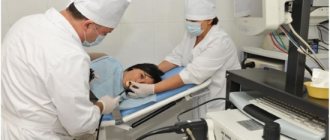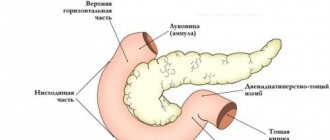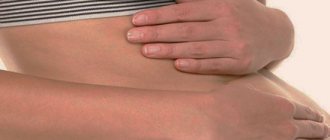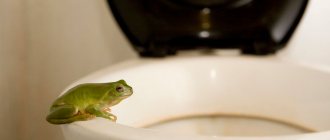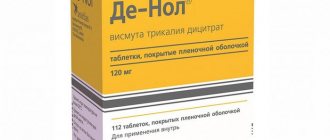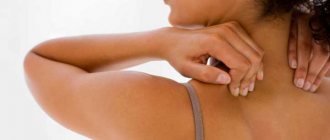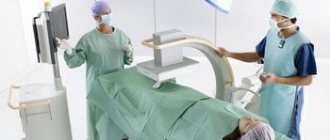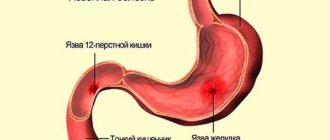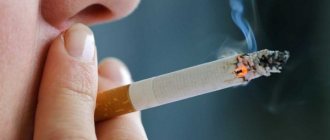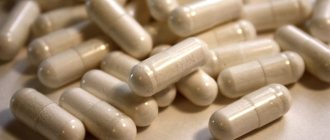Fibrogastroduodenoscopy or FGDS is an instrumental endoscopic method for examining the digestive tract, which is used to diagnose many gastroenterological diseases. In patients, this procedure is better known as gastroscopy of the stomach, but the scope of the study is not limited to this organ.
Indications for gastroscopy may include pathologies of the esophagus, stomach and duodenum, among which there are dozens of diagnoses. There are also extensive contraindications to FGDS, which can be associated both with problems of the digestive tract and nearby organs. Often, pathologies of organs and their systems that are located remotely and, at first glance, have nothing to do with the digestive system, can become contraindications for gastroscopy.
How to prepare for the procedure
Preparation for the procedure has specific features. It is important that the procedure be carried out strictly on an empty stomach, because the food eaten will prevent you from seeing all the changes on the mucous membrane. Therefore, it is necessary not to eat or drink for at least 6 hours before the procedure, and it is also not recommended to smoke.
If there is still a need to drink water, for example, to wash down medications that the patient needs for life, then they can be taken with small sips of water, but after this you must inform the doctor conducting the study. Due to the fact that the procedure is performed on an empty stomach, patients are scheduled for examination in the first half of the day.
Patients with asthma are allowed to use the inhaler as directed. Smokers are advised not to smoke at least 6 hours before the procedure.
It is very important to inform the doctor 5 days before the gastroscopy about any medications the patient is taking, as the dose may need to be adjusted, or even completely stopped taking certain medications, such as iron supplements, antacids, antisecretory and blood thinners. You should discuss any allergies to medications, as well as underlying medical conditions such as heart or lung disease, with your doctor.
Diet before gastroscopy
On the eve of endoscopy, the diet should be as light as possible throughout the day; in the evening, a light dinner in the form of stewed vegetables with boiled chicken or fish. In this case, the serving is supposed to be no more than 350 grams. Next, fasting for 12 hours before the study, since during this time the stomach has time to fully digest and evacuate what has been eaten.
The volume drunk on an empty stomach should not exceed 300 ml. Large amounts of fluid may cause vomiting when the endoscope is inserted; You are only allowed to drink water, as other liquids can cause the production of hydrochloric acid.
If these conditions are met, nothing will interfere with the endoscopy.
Is it possible to check the stomach in other ways?
It is impossible to check the stomach using other existing methods, such as ultrasound or x-rays, since they do not provide such a complete picture and information about the condition of the stomach. In order to examine the stomach using ultrasound, you will need to fill it with liquid, which is extremely impossible to do. X-rays do not make it possible to get a complete picture of what is happening inside, so there are no alternative methods for examining the gastrointestinal tract today.
For suspicious patients who cannot tolerate the process of “swallowing” an endoscope, there is a gentle technique. This is due to the fact that the study is carried out while the patient is sleeping. To temporarily put the patient to sleep, a special drug is injected intravenously, which maintains sleep for some time. This is a kind of anesthesia, only in a gentle form.
It is also known that in modern clinics the stomach is examined by swallowing a disposable capsule, the size of which does not exceed 1.5 cm. This capsule is equipped with a camera, which, after swallowing the pill, turns on and records everything that happens inside. After about 6-8 hours, this pill passes the entire gastrointestinal tract and is excreted along with the feces. Now all that remains is to find the pill and read information from it into modern gadgets. Research of this kind is the most in demand, but its cost is quite high.
A simple examination of the stomach will cost 500 rubles, a gastroscopy in a dream will cost from 3,000 to 9,000 rubles, and a study using a capsule reaches 15-20 thousand rubles. The disadvantage of a capsule study is that it is not possible to perform physical intervention during diagnosis. To conduct a detailed examination, the patient is only required to follow the strict instructions of the doctor or nurse.
Why do gastroscopy?
With gastroscopy, the doctor is able to visualize the mucous membrane of the upper gastrointestinal tract from the esophagus. Gastroscopy is effective and has replaced the use of X-rays in many cases. This helps the doctor see any abnormalities in the duodenum, stomach, or esophagus. This method is accurate and safe.
Through the gastroscope, the doctor can take samples of the mucous membrane for examination and obtain video images using a video sensor installed at the end of the gastroscope. The examination can be videotaped and used for later diagnostic comparison.
Patients are often referred for gastroscopic examination due to symptoms of dyspepsia, which can usually be treated with medications. Dyspepsia is sometimes caused by a peptic ulcer, and it is now known that many ulcers are caused by a bacterial infection in the stomach. A biopsy is the removal of a small section of the mucous membrane followed by histological examination and is performed during gastroscopy to determine the presence of an infectious pathogen or other anomaly. In a very small number of patients with dyspepsia, a biopsy can detect malignant tumors in the upper gastrointestinal tract or conditions preceding malignancy, which is very important for therapeutic and diagnostic purposes. Further research may be planned to ensure the most effective treatment.
Gastroscopy will help:
- Find problems in the upper gastrointestinal tract. These problems may include: inflammation of the esophagus (esophagitis) or stomach (gastritis), gastroesophageal reflux disease (GERD), narrowing (stricture) of the esophagus, varices in the esophagus, Barrett's esophagus, which can significantly increase a person's risk of developing esophageal cancer, hiatal hernia, ulcer, cancer.
- Find the cause of bloody vomiting or hemoptysis.
- Find the cause of symptoms, such as abdominal pain or bloating, trouble swallowing (dysphagia), vomiting, or unexplained weight loss.
- Find the cause of the infection.
- Check the healing of ulcers during therapy.
- Look at the inside of the stomach and upper small intestine (duodenum) after surgery.
Gastroscopy can also be performed in the following cases:
- To check for injury to the esophagus in an emergency (for example, a burn if a person drank acetic acid).
- To collect tissue samples (biopsy) that need to be subjected to microbiological examination.
- To remove polyps from the small intestine, stomach, esophagus.
- For the treatment of upper gastrointestinal bleeding that may cause anemia.
- To remove foreign objects that have been swallowed.
How does FGS differ from FGDS?
In medicine, two terms are used: gastroscopy and gastroduodenoscopy. What is the difference between these two types of research? Gastroscopy is an examination of the stomach, but most often this is the name for any procedure associated with swallowing a tube.
Gastroduodenoscopy, or its full name esophagogastroduodenoscopy, represents a detailed examination of such parts of the gastrointestinal tract as the esophagus, stomach and duodenum. Gastroduodenoscopy includes a comprehensive examination of the gastrointestinal tract, which allows simultaneous determination of pathologies in the esophagus, duodenum and stomach. When using the word gastroscopy, it means examination of only the stomach, and esophagogastroduodenoscopy is a comprehensive approach to the study of the gastrointestinal tract. Since it is quite difficult to pronounce the word esophagogastroduodenoscopy, this procedure is called gastroscopy.
Sedation and anesthesia
Before the gastroscopy procedure, the patient's pharynx is treated with the anesthetic lidocaine. This is necessary in order to reduce pain and other negative effects that occur when swallowing the device. At the client's request, gastroduodenoscopy of the stomach is performed under anesthesia. In this case, intravenous anesthesia is administered, which causes relaxation and light sleep. Patients wake up within an hour, but the effects of the drugs are longer lasting, making it unsafe to drive until the next day. General anesthesia for medical reasons is provided only in special cases (in young children and when planning very complex procedures).
What can you eat before FGS
Some diseases even require you to follow a special diet in preparation for this procedure. Such ailments include impaired excretion of food through the duodenum and stenosis of the esophagus. On the eve of the examination, i.e. at approximately 6 pm, the patient should avoid overly hot and cold foods. The consistency of the food should be mushy or even liquid. You can have dinner with easily digestible foods, for example:
- whole milk;
- pureed cottage cheese;
- fresh sour cream;
- low-fat yogurt;
- non-acidic kefir;
- soups with weak fish, meat or vegetable broth;
- low-fat cheese;
- eggs (soft-boiled or in the form of an omelet);
- boiled or fresh vegetables such as potatoes, carrots, beans, beets, cauliflower;
- lean fish, such as hake, pollock, pike perch, perch or pike;
- fruits such as apples, bananas, pears.
What not to eat before gastroscopy of the stomach
Preparation for FGDS of the stomach requires limiting the following foods:
- nuts;
- alcohol;
- chocolate;
- seeds;
- mayonnaise, sauce;
- fast food;
- pasta;
- dough products;
- salt;
- spicy and fatty foods.
Types of gastroscopy
Typically, an endoscope has a channel through which, if necessary, the instrument can be passed at any time to perform a biopsy, treatment, or other manipulation. These tools include:
- flexible forceps - an instrument used to take a tissue sample;
- biopsy forceps, which are recognized for removing a tissue sample or suspicious lesion;
- a cytology brush, which is used to collect cell samples;
- pliers for removing sutures.
Endoscopy can be not only a diagnostic procedure, but also a therapeutic one; it can be used to:
- Surgery using just small cuts in the skin, called laparoscopic surgery.
- Laser therapy uses a powerful beam of light to kill cancer cells.
- Microwave ablation, which uses heat to destroy cancerous tissue.
- A surgical operation using an endoscope that is inserted into the gastrointestinal tract, this operation is called endoscopic mucosal resection.
- Photodynamic therapy, which, after injecting tissue with a light-sensitive drug, destroys the tumor using a laser.
- Administration of medications.
Transnasal gastroscopy
Transnasal gastroscopy, which is performed through the nose, is much easier to tolerate than the traditional method through the mouth, because the intranasal route of administration does not cause a gag reflex. This method is mainly used in elderly patients with a complex of concomitant diseases. Patients can speak if necessary during the procedure. This means that fewer patients require sedation, and it means that patients can continue with their daily activities after the procedure.
Capsule gastroscopy
Capsule gastroscopy is a procedure that uses a tiny wireless camera to take pictures of the digestive tract. The camera is located inside a small capsule that the patient swallows. As the capsule passes through the digestive tract, it takes thousands of images, which will then be transmitted to a recording device. This method is performed without swallowing the probe, as with traditional gastroscopy. The procedure is considered complete after the capsule leaves the body naturally. This method is not used as often as endoscopic gastroscopy. The main disadvantage of the method is its considerable cost.
Indications for the procedure
The FGS procedure is prescribed to patients who have stomach pain. In this case, the doctor, after examination, decides on the need for such a study. The doctor's preliminary diagnoses can only be confirmed with the help of a gastroscopic examination.
The procedure is indicated in cases where it is necessary to identify the degree of damage to the gastric mucosa, in case of poisoning or chemical burns. FGS is also valued because it can be used to quickly examine the patient and take appropriate measures.
Gastroscopic examination is done as a preventive measure for people who have problems with stomach ulcers, gastritis and polyps. Regular examination allows you to assess the condition of the gastrointestinal tract and, if necessary, adjust the treatment regimen. Prevention is also recommended for those people in whose family there were cases of burdened heredity.
Gastroscopy and colonoscopy on the same day
The efficiency of same-day gastroscopy and colonoscopy has many potential benefits, as it can reduce costs, shorten hospital stays and speed up patient care. General indications for these endoscopy methods are hidden or overt gastrointestinal bleeding, a history of relevant pathology (polyps, ulcers), unspecified abdominal pain, diarrhea or other symptoms, radiological studies and iron deficiency anemia. The practice of one-day gastroscopy and colonoscopy is possible, has excellent diagnostic yield even in older people and does not carry increased risks. When indicated, the practice of conducting one-day studies should be encouraged.
How does the procedure work?
In order for the doctor to correctly assess the mucous membrane of the gastrointestinal tract during the diagnostic process, the patient must first of all undergo good preparation before gastroscopy. The study is usually performed in the first half of the day, on an empty stomach. It is not recommended to eat food 6–8 hours before the scheduled examination. You can read more about the nuances of preparation in this article.
Gastroscopy is performed in a specially equipped room. Technique for performing the procedure:
Transnasal gastroscopy
- An anesthetic is sprayed onto the root of the patient’s tongue or they are asked to rinse their mouth with an anesthetic solution. Thanks to such manipulations, the muscles of the pharynx relax and the urge to vomit is reduced. This will help the doctor easily insert a modern endoscope (gastroscope) into the esophagus.
- Most often, the gastroscopy procedure is performed without anesthesia, which is not always comfortable for the patient, but he may insist on having the procedure performed with sedation or anesthesia.
- The patient is placed on his side (mostly right). Then he is asked to tilt his head forward slightly so that his chin touches his chest. A special mouthpiece is inserted into the patient's mouth, which protects the patient's teeth from injury by the endoscope. In addition, this can protect expensive endoscopic equipment from biting.
- The removable tip of the endoscope is treated with a special gel and directed into the oral cavity. While moving the tube with the optical system along the esophagus, the doctor gently presses the tongue and gives the patient recommendations on swallowing and how to breathe correctly during the process.
- The doctor carefully advances the endoscopic tube deeper and deeper, looking through the eyepiece or at the monitor, assessing the condition of the walls of the examined organs along the way.
- If a lot of saliva accumulates in the oral cavity, the assisting nurse removes it using a special aspirator. To improve visibility, air or water can be supplied through a special channel in the endoscopic tube into the lumen of the stomach, which is also removed using an aspirator after washing the walls or cleaning the endoscope lenses.
- The endoscope has a special hole through which miniature surgical instruments can be passed, allowing for biopsy sampling or minor resection.
- After completing the examination, the endoscope is smoothly removed from the human body.
For those who are terrified of this procedure and are interested in how long gastroscopy lasts, it will be comforting to know that it will not take much time. In most cases, it can be performed within 3–10 minutes (sometimes faster) by an experienced endoscopist. And for those who are worried about whether such an endoscopic examination can harm themselves, it is important to know that in the hands of an experienced specialist, a gastroscope does not harm the patient.
The endoscopic equipment is equipped with a video camera, which allows you to record a video of gastroscopy and subsequently re-analyze problem areas.
The biopsy procedure is absolutely painless
What happens during the procedure
Shortly before gastroscopy, the mouth and throat are anesthetized using an aerosol. All dentures must be removed before the procedure. The patient may be given a sedative. The time of gastroscopy is about 5-10 minutes, it may be longer, depending on the purpose of this procedure. Usually the procedure is performed in a lying position on the left side; in some exceptional cases, gastroscopy is performed while standing. A small tube or protective ring is placed between the teeth to keep the mouth open and prevent the patient from biting the gastroscope. First, the patient is asked to take a swallow so that the gastroscope can enter the esophagus. It is then slowly pushed into the stomach and down to the opening of the duodenum.
Using video images, the doctor monitors the advancement of the probe and visualizes the area of suspected disease. Bleeding, varicose veins, unusually narrow passages and stomach ulcers can also be seen on the screen. If necessary, a tissue sample will be taken for subsequent microbiological examination, which is not painful for the patient.
Endoscopy of the stomach
Gastroscopy is only a type of endoscopic examination - a method for studying internal organs. The esophagus, bronchi and lungs, bladder or stomach can be checked, both in adults and in children. Gastroscopy is used to determine the condition of the latter. This procedure has several synonyms - gastroenteroscopy, esophagogastroduodenoscopy or endoscopy, fibrogastroscopy or FGS, fibrogastroduodenoscopy or FGDS. All terms have the same meaning, because its components mean:
- “esophago” – esophagus;
- “gastro” – stomach;
- “scopy” – visual inspection;
- “fibro” is a flexible tube, i.e. fiberscope;
- "duodeno" - duodenum.
How is FGS of the stomach done?
A similar method is intubation, only it is aimed at collecting gastric contents using a syringe. In addition, the patient must swallow the tube independently. Gastroscopy is performed for therapeutic and diagnostic purposes. Using this procedure, the following activities are carried out:
- foreign bodies are removed from the stomach;
- pieces of tissue are taken for biopsy;
- benign formations are removed;
- medications are administered;
- cauterization of the bleeding vessel is performed;
- the dynamics of disease treatment is monitored.
There is a special room in the clinic for the procedure. In it, the patient needs to lie on the couch, and on his left side. Before the procedure begins, a plastic mouthguard is inserted into the person’s mouth, which protects against possible injury. The subject is offered local anesthesia by injecting a lidocaine solution or administering it intravenously.
After anesthesia, a specialist inserts a gastroscope equipped with a video camera through the mouth or nasal passage, and then the process of examining the digestive tract takes place. The duration of the procedure is 5-15 minutes. Gastroscopy under anesthesia takes a long time, because the person sleeps during it and wakes up much later in a separate room.
Side effects and complications of gastroscopy
Most gastroscopy is performed without any problems or complications. Some people may experience mild inflammation of the throat lining for a day or so.
The patient may feel tired or drowsy for several hours if a sedative was used during the procedure. There is a slightly increased risk of developing a chest infection or pneumonia after a gastroscopy.
Sometimes the endoscope causes some damage to the intestines. This can cause bleeding, infection, and (rarely) a hole (perforation). If any of the following symptoms occur within 48 hours after gastroscopy, you should contact your doctor immediately:
- pain after the procedure in the abdomen (particularly if the pain gradually becomes worse and differs in intensity from any “normal” stomach pain);
- increased temperature (fever);
- labored breathing;
- vomiting blood.
A small number of people have had a heart attack or stroke during or shortly after a gastroscopy. This tended to occur in older people who had underlying heart or lung problems.
Some people have an allergic reaction to the anesthetic, but this is discussed before the procedure.
Preparation for gastroscopy of the stomach
The first and main nuance in preparing for gastroscopy is the psychological attitude. Due to the widespread belief about pain and discomfort during the procedure, a person begins to fear it. There will be discomfort, but we are not talking about pain. Modern equipment provides tolerable sensations during gastroscopy. In some cases, a person may be prescribed sedatives. Preparation for gastroenteroscopy is carried out both at home and during hospital treatment. In the latter case, it includes the following steps:
- Consultation with a doctor. The specialist clarifies such nuances as the presence of allergies, heart pathologies, pregnancy, past surgical interventions, as well as information about blood clotting.
- Signing of documents. After discussing gastroscopy, the patient must sign a consent to the procedure.
- Direct preparation for FGDS examination. It consists of limiting food and fluid intake 8 hours before the start. What you can and cannot eat is described below.
Useful article? Share the link on VKontakte
Preparation for gastroscopy can be done at home if the person is not in hospital. It is divided into 2 stages, the first begins in another 2-3 days and requires:
- limiting spicy and fatty foods, especially if you suspect a stomach ulcer;
- taking anti-inflammatory herbal teas, such as chamomile;
- restriction of active sports;
- monitoring the condition of the stomach and intestines, i.e. for the possible occurrence of acute pain;
- refusal to take non-steroidal anti-inflammatory drugs.
How to prepare for FGDS? The following rules must be followed on the day of the procedure:
- do not smoke 3 hours before the procedure;
- tell your doctor about a possible pregnancy;
- empty your bladder before the test;
- remove jewelry, glasses or contacts, dentures;
- take a personal towel, which will be needed if you drool during the procedure;
- do not try to speak or swallow saliva during diagnosis.
How is gastroscopy performed?
The patient must arrive at least half an hour before the gastroscopy. This is necessary to calm down and undergo preparation already in the office. It is as follows:
- the upper part of the esophagus and the root of the tongue are treated with dicaine or another anesthetic to reduce pain when the tube moves;
- mild sedatives are injected under the skin (usually atropine sulfate or promedol);
- in some cases, general anesthesia is used (this is resorted to if a child under 6 years of age or a person with mental disorders has indications for gastroscopy).
After the tongue is numb and the patient has calmed down or fallen asleep, they proceed directly to gastroscopy. It is carried out in several stages:
- The patient is placed on the couch. It should be on the left side, the back should be straight.
- A device is inserted into his mouth to prevent the teeth from closing during the examination (a mouthpiece).
- To dilate the esophagus, the person being tested must take a sip and try to relax their throat.
- During the swallow, the healthcare professional should insert the gastroscope tube into the esophagus at an angle of 70 to 90 degrees. This will allow the device to take an anatomical position and not injure organs.
- The device is slowly lowered into the stomach, constantly rotating.
- If necessary, a biopsy or therapeutic manipulation is performed during the study.
For a more accurate diagnosis of the condition of the gastric mucosa, it is first filled with air to align its walls.
The duration of a typical procedure is about 15 minutes. If treatment is carried out, it increases to half an hour.
After removing the gastroscope, the patient must lie down for half an hour, then he is placed in the observation room. Then you should not eat or get out of bed for 2–3 hours after the procedure.
What does the procedure show?
Gastroscopy of the stomach without swallowing and with the insertion of a device shows the condition of the mucous membrane of the digestive organ. In addition, the diagnostic method allows you to evaluate the functioning of:
- lumen;
- stomach;
- duodenum.
The procedure allows you to determine the cause of pain in the digestive organ. The method is considered one of the most effective. Detects damage, varicose veins and inflammatory processes.
This method allows you to examine the stomach and duodenum
Preparation for gastroscopy of the stomach in the first half of the day is insignificant. That is why the procedure is considered one of the most popular when studying the functioning of the digestive organ. The diagnostic method helps to determine the presence of:
- gastritis;
- Helicobacter pylori infection;
- ulcers of the digestive organ;
- erosive defects.
Before the procedure, the patient must find out how gastric FGS is performed. If there are neoplasms of a benign or malignant nature, the technique helps to study them as thoroughly as possible. Gastroscopy helps to establish the most accurate diagnosis.
Gastroscopy allows you to take tissue samples for histology
Preparation for gastric FGS includes several important recommendations. The patient should take into account that if suspicious tumors are detected in the digestive organ, the doctor may take several tissue samples for histological examination.
The procedure allows you to detect internal bleeding that does not appear externally. In some cases, the patient may be indicated for urgent surgery.
The advantage of gastroscopy is that during the procedure the doctor can not only diagnose abnormalities, but also perform certain manipulations to eliminate them.
This method allows the doctor to see pathologies that are asymptomatic
It is important to take a responsible approach to figuring out how to prepare for an FGDS of the stomach in the first half of the day. With this method, superficially localized tumors can be removed, as a result of which bleeding stops.
As prescribed by the doctor, possible gluten intolerance is determined during the procedure.
Contraindications
| Absolute | Relative |
|
|
How dangerous is the procedure and should you be afraid of it?
Gastroscopy is a procedure that is feared by the vast majority of those who have suspected gastrointestinal pathologies or already diagnosed corresponding diseases. Deciding to have a gastroscopy is an impossible task for some of us. However, in reality there is no need to worry too much about her. It is absolutely safe for the patient. The likelihood that internal organs will be damaged as a result of its implementation is negligible: specialists undergo appropriate training, periodically confirm their qualifications, and the devices themselves are created in such a way as to 100% eliminate the possibility of injury. Yes, the procedure is really unpleasant, but it does not harm your health in any way.
Paid clinics are offering a new service for especially anxious patients: gastroscopy in their sleep. That is, the examination is carried out under anesthesia. Before you decide to go for it, think and compare what consequences general anesthesia can lead to and compare with the risks of using local anesthesia
Examination results and their interpretation
Based on changes in the mucous membrane, the doctor quickly makes a diagnosis. During the manipulation, the acidity of gastric juice, the presence of Helicobacter pylori are checked, and the prescribed treatment is monitored. When examining the walls of the gastrointestinal tract, the doctor determines their color, swelling, relief, presence of damage, and may take material for analysis. If an ulcer is suspected, the body of the stomach, the peripyloric and bulbar zones, as well as the postbulbar region are carefully examined. This is where damage is most often seen. When it is identified, the size, condition of the edges, the presence of bleeding and its causes are described.
If, upon examination of the duodenum, swelling, hyperemia, and accumulation of lymphoid elements (the so-called semolina syndrome) are detected, then a diagnosis of “lymphangiectasia” is made. Severe swelling of the mucous membrane during gastritis hides its defects. To identify them, air is supplied to the stomach to straighten the folds and re-examined. This causes inconvenience to the patient, but it is absolutely not particularly harmful.
Contraindications for gastroscopic examination
Despite the fact that gastroscopy is a painless and safe procedure, there are a number of contraindications to its implementation:
- diseases of the cardiovascular system (hypertension, recent heart attack, serious pathologies of large vessels);
- recent stroke;
- significant increase in blood pressure;
- blood diseases (hemophilia);
- mental illness, epilepsy;
- bronchial asthma with severe and frequent exacerbations;
- acute gastritis accompanied by vomiting;
- severe curvature of the spine.
In the case of an acute viral infection in a patient, increased body temperature, blood pressure, or simply feeling unwell, it is recommended to postpone the examination until the general condition normalizes.
In emergency situations, when gastroscopy is vitally necessary (for example, with intense gastric bleeding), the procedure is carried out despite most contraindications.
Indications for endoscopic examination of the gastrointestinal tract
An examination of the gastrointestinal tract using an endoscope is prescribed in the following cases:
- to diagnose diseases of the gastrointestinal tract, if the patient complains of frequent pain in the stomach area, and is also bothered by nausea, gag reflex, and stool disorders;
- to confirm the diagnosis;
- for the purpose of identifying the microorganism Helicobacter pylori;
- when a foreign body enters the stomach (one of the cases when emergency gastroscopy is performed);
- to study the extent of the spread of the inflammatory process;
- if bleeding is suspected in the cavity of the digestive organ to identify its sources;
- for the purpose of studying benign or malignant formations;
- for carrying out therapeutic and minimally invasive surgical procedures.
Examination of the gastrointestinal tract using an endoscope
In some cases, examining the gastrointestinal tract using an endoscope is not recommended:
- a heart attack or stroke that the patient has suffered recently;
- obstruction of the patency of the organs being examined;
- poor blood clotting;
- circulatory disorders;
- pulmonary or heart failure;
- dysfunction of the respiratory system;
- children under 6 years of age (in case of emergency, endoscopy is performed under general anesthesia);
- mental disorders;
- dysfunction of the endocrine system.
In modern medicine, FGDS remains the most clear and highly informative diagnostic method.
Despite the relative ease of implementation, medical manipulations cause discomfort and unpleasant sensations, and therefore are strictly regulated by indications.
- Pain in the stomach that appears immediately after finishing a meal and indicates the development of gastritis or peptic ulcer.
- Rapid weight loss in a short time.
- Decreased or complete absence of appetite.
- Frequent and prolonged heartburn.
- Bloating.
- Belching of unknown etiology.
- Pains called hunger pains, which do not appear immediately, but 3-4 hours after eating, and indicate the development of duodenitis.
- A decrease in hemoglobin, indicating the likelihood of internal bleeding.
Diagnosis can be carried out as a preparatory stage for surgical treatment.
Gastroscopy in any version is recognized as a safe diagnostic method and is indicated in most cases, however, there is a certain list of diseases for which the procedure is contraindicated. Their presence in the anamnesis allows the doctor to resort to other methods of diagnosing the gastrointestinal tract. The list of restrictions includes:
- blood diseases;
- mental disorders;
- dysfunction of the central nervous system;
- diseases of the respiratory and cardiovascular systems;
- ischemic disease, strokes, heart attacks.
How to undergo a gastroscopy painlessly
You need to be aware of the progress of the procedure, not be embarrassed when, as the tube is advanced, belching and salivation reflexively occur (these are physiological reactions of the body that should not be embarrassed), try to relax.
If you follow all the above recommendations, it is more likely to pass with less discomfort.
If your knees are shaking from fear and you can’t get yourself ready for the examination, you can do the procedure under anesthesia. An anesthetic is injected into a vein, which puts the patient to sleep. After gastroscopy is performed and the probe is removed, the patient is woken up. There are no memories of the manipulation left in his memory.
How to breathe correctly during gastroscopy
Before inserting the probe into the esophagus, the doctor will ask you to take several deep breaths and exhales; after the next inhalation, the device is installed at the root of the tongue, and as you exhale, you should make a swallowing movement. After which the device slides inside. The patient’s task is to then breathe calmly through the mouth, take a leisurely breath, and then exhale.
If a patient has breathing problems due to anxiety or discomfort, then the nurse nearby will certainly calm him down and tell him how to breathe correctly. We must not panic. It is impossible to suffocate during this study, because the airways, nasopharynx and trachea, are absolutely free.
How often can and should you do a gastroscopy?
For patients with chronic gastric diseases without exacerbations, doctors recommend endoscopic examination at least once a year. This is necessary to monitor the dynamics of the disease; observation allows you to monitor whether there are any deteriorations in your health, and if they are detected in a timely manner, eliminate them with therapy.
With the progression of the disease, exacerbation of chronic processes, gastroscopy is prescribed more often, on the recommendation of the attending physician. Often the procedure is prescribed to monitor the effectiveness of treatment. There are no restrictions on the manipulation, provided that it is performed without complications.
Diet features
Before the study, the patient should study the preparation for gastroscopy of the stomach, especially if it is performed in the afternoon. Minor dietary recommendations must be followed. Within 24 hours, the sick person must completely abstain from alcohol-containing drinks.
Before the procedure, you should not eat mayonnaise or other fatty or hot sauces.
Also per day you need to exclude from the diet:
- foods high in fiber;
- mayonnaise and other sauces;
- fatty types of meat and fish;
- whole wheat bread;
- cheeses.
Rarely do patients ask what they should not eat before an FGDS of the stomach. Within two days, the patient must completely abstain from acute foods, as well as foods that increase gas formation. These include legumes, chocolate, nuts and carbonated drinks. Otherwise, the results of the study may be inaccurate.
You should not drink tea or coffee before gastroscopy.
Most often, gastroenterologists are asked whether it is possible to drink before gastroscopy of the stomach. On the day of diagnosis, all kinds of tea, coffee and any other drinks are strictly prohibited. You are allowed to drink a small amount of water. This can be done no later than 3 hours before the manipulations.
Another common question is how much you should not eat before gastroscopy of the stomach. The last meal should take place no later than 19:00. Eating in the morning is strictly prohibited.
Performing gastroscopy
Gastroscopy is performed using a special flexible and thin endoscopic device equipped with a micro-video camera and illuminator. The image of the internal walls of the examined organs, obtained by the camera, is transmitted to the monitor in an enlarged size, which allows you to visualize the slightest changes in the mucous membrane and diagnose diseases in the early stages of development.
Modern gastroscopes are much more compact, easier to use and more comfortable for patients than those that were used a few years ago. Most patients do not report any pain during the procedure. Moreover, before the introduction of an ultra-thin gastroscope, local surface anesthesia (spray, solution) is performed to reduce the gag reflex.
In cases where surgical gastroscopy or a longer procedure than usual is expected, general anesthesia may be used. Also, gastroscopy under general anesthesia is performed in children under 6 years of age, using special pediatric gastroscopes.
Nowadays, it is increasingly practiced to insert a gastroscope through the nose (intranasal gastroscopy), which does not cause any discomfort, does not require anesthesia and does not cause vomiting.
Gastroscopy is performed with the patient lying on the left side or on the back (under anesthesia).
After special preparation and treatment, a gastroscope is inserted into the oral cavity and the patient makes a swallowing movement, due to which the device slips into the esophagus and then into the stomach.
With intranasal gastroscopy, the endoscope is simply inserted into one of the nasal passages (completely painlessly) and then into the pharynx, esophagus and stomach. There is no danger of breathing problems during gastroscopy, so the fear of some patients of suffocation during gastroscopy is unfounded.
After this, medical carbon dioxide or water is supplied into the stomach cavity through a channel located inside the endoscope in order to fill the stomach and smooth its walls for better viewing.
The doctor carefully examines the walls of the esophagus, stomach, duodenum and the sphincter area, takes samples of the necessary material (a piece of tissue, contents), if necessary, performs medical or surgical manipulations (special instruments are passed through the endoscope channel), after which gas or liquid is removed from the stomach (using special aspirators) and a gastroscope.
This completes the gastroscopy procedure. On average, the whole process takes no more than half an hour (diagnostic gastroscopy). The duration of medical or surgical gastroscopy depends on the complexity and volume of work performed.
After gastroscopy it is recommended:
- do not eat or drink for an hour;
- do not drive a car for two hours;
- exclude hot, cold, spicy and sour foods for the next 24 hours (in case of a biopsy or surgical intervention).
The result of the examination is known immediately, the biopsy material is sent to the laboratory for further study.
When is a diagnostic examination of the gastrointestinal tract prescribed?
Indications for gastroscopy of the stomach are the presence of the patient:
- pain in the epigastrium, which can appear on an empty stomach or after eating;
- nausea and frequent vomiting;
- sour belching;
- feeling of heaviness and fullness in the stomach after eating;
- heartburn;
- a feeling of bitterness in the mouth;
- vomiting with blood or food ingested.
These clinical signs indicate pathological processes occurring in the organ, these include:
- impaired secretion of gastric juice - atrophic gastritis in acute or chronic form;
- the formation of ulcerations in the mucous membranes – peptic ulcer;
- exacerbation or complication of mucosal defects - bleeding, lumen stenosis;
- the formation of growths on the membrane - polyps;
- cancer tumor.
Gastroscopy is also indicated for checking the stomach in those patients who have had their digestive tract examined without swallowing an endoscopic probe and no abnormalities were detected during the examination, despite the presence of subjective symptoms. During the manipulation, a specialist can take a sample of a suspicious area of tissue to carefully study the cellular microstructure. This diagnostic technique is called a biopsy and is considered the most important way to detect cancer pathology.
Recommendations for the patient after gastroscopy
After the examination, carried out under anesthesia, you should not drink alcohol! Food and water can be taken 1-2 hours after gastroscopy. Food and drinks should not be hot. In the next few days, preference should be given to lighter dishes with a soft consistency without seasonings and spices - fermented milk products (soft cottage cheese, yogurt, fermented baked milk), cream soup, oatmeal or semolina porridge. The patient is also recommended to lie down for about 30 minutes after the examination. During the first 24 hours, you should rest more and avoid physical activity, refusing to visit gyms and fitness clubs. It is advisable to take a short walk through the park.
If, while following all the rules of daily routine and nutrition, the patient experiences pain in the gastrointestinal tract for more than three days, constipation or diarrhea, the attending physician should be notified. It is possible that some complications arose during the procedure.
Gastroscopy helps doctors identify various diseases of the gastrointestinal tract. Compared to other methods of examining patients, gastroscopy is the most informative. Serious complications during the procedure are extremely rare. Gastroscopy is performed even on young children and pregnant women. Proper preparation and attitude of the patient will facilitate the examination, reduce discomfort, help establish a diagnosis or adjust the treatment regimen for gastrointestinal diseases.
Sign up for a gastroscopy procedure
Make an appointment
Alternative methods for examining the stomach
In addition to FGDS, there are a number of other diagnostic methods that help detect gastric malignancy. Their comparative characteristics are presented in the following table:
| FGDS | Ultrasound | CT | MRI | |
| Description of the procedure | Endoscopic diagnosis with visual examination of the mucosa | Non-invasive technique using ultrasound | X-ray technique with computer processing of the obtained images | Based on the use of magnetic resonance of atomic nuclei |
| Information content for stomach cancer | High (allows you to make a diagnosis and determine the type of cancer) | Low (only large tumors are visualized) | High (detects metastases to lymph nodes and distant organs) | High (detects metastases to lymph nodes and distant organs) |
| Using Contrast | Not required | Not required | Increases the information content of the technique | Increases the information content of the technique |
| Carrying out a biopsy | Held | Not carried out | Not carried out | Not carried out |
| Time spending | 30-40 minutes | 15-20 minutes | 10-15 minutes | 30-50 minutes |
| Side effects | · Traumatization of the gastric mucosa Bleeding Entry of stomach contents into the respiratory tract | None | Frequent use increases the risk of developing tumors. | None |
| Contraindications | · Severe condition of the patient · Blood clotting disorders Acute stage of myocardial infarction or stroke | None | · Pregnancy · Severe obesity | · Presence of metal implants · Severe obesity |
| Price for research in Moscow | 1200-9700 rub. | 700-4800 rub. | 4000-13500 rub. | 7600-21000 rub. |
Early diagnosis in the case of oncology gives a better chance of long-term remission. Want to know if stomach cancer is visible on an ultrasound? Read this article.
What is gastroscopy?
There are several varieties of this diagnostic method: EGDS (esophagogastroduodenoscopy), FGDS (fibrogastroduodenoscopy), esophagogastroduodenoscopy. All procedures are performed by a specialist gastroenterologist. If the hospital is modern, then the studies will be carried out by a specially trained endoscopist.
The name of the diagnostic method is formed from two Greek words: gastēr, which means stomach and skopeō to explore, look, observe.
Gastroscopy is a procedure during which the doctor examines the surface of the stomach and identifies various abnormalities. The diagnostic device is equipped with a special system that allows the gastroenterologist to view the condition of the patient’s insides.
A special tube is inserted through the mouth
There is a mini camera at one end of the instrument and an eyepiece at the other. Modern gastroscopes can transmit images from a camera to a monitor screen, which greatly facilitates the doctor’s work. The apparatus for performing the procedure allows the doctor to make small movements inside the patient.
The gastroscope is also equipped with a lighting element. A small light bulb is necessary because darkness reigns in the lumen of the esophagus and stomach.
What does gastroscopy show?
The specialist examines the condition of the gastric mucosa. During the procedure, the doctor will be able to see neoplasms (in particular, tumors), polyps, and all kinds of damage on the surface of the stomach. A specialist can also take a piece of tissue for a biopsy and measure the acidity in the gastrointestinal tract. Gastroscopy is the most effective diagnostic method, allowing you to see the full picture and make an accurate diagnosis.
